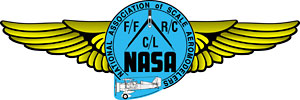Repairing Warped Wings
By: Andrew Benjamin
Even though I have plenty of new planes around in various stages of completion, I enjoy acquiring used airplanes whenever I find one I like. It’s the flea market mentality in me I guess. Problem is, many times these planes aren’t completely straight like the Pica P-51 (was) I’m working on that I bought at the local club auction. I didn’t have an opportunity to check the incidences before I bid on it and then I put it away until now. I just discovered it has a warped wing.
Here’s what I do if I find a warped wing and I thought I’d tell you about it in case you buy one (or build one) that isn’t exactly perfect. The Pica Mustang, like the majority of warbirds are made up of balsa sheeting over ribs and formers. In my case one wing tip was 1 degree positive over the other one. This isn’t a lot and some might ignore it, but I can’t live with any plane that isn’t real close to being perfectly straight. I not only bugs my sense of inner peace, but I don’t like necessary trim changes over the speed envelope.
I have a large dead flat and level work table I work from and I use digital and laser incidence meters mounted on homemade brackets of various sizes. I put the plane on it’s back with the wing secured and shimmed it level. Then I firmly secured the plane so it couldn’t move. I checked to see that the good wing half was at O degrees, the I went over to the warped side and cut an X through the bottom sheeting (built up wing) from the leading edge root to the trailing edge tip and from the trailing edge root to the leading edge tip. I accomplished this with a number eleven exacto blade and I purposely cut into the ribs underneath about a 1/4 inch. NOT THE SPAR THOUGH!
I put the digital incidence meter back up on the warped wing tip and twisted the now pliable wing tip until it read 0 degrees and noted the movement in the “X” for reference. I then flipped the incidence meter upside down on the wing with the brackets near one end so that the long home made aluminum extrusion extended beyond the leading edge about 2.5 feet. I hung a 1/4 full gallon paint bucket on the right place of the aluminum extrusion to leverage the twist out of the wing in the opposite direction a little beyond the 0 degrees I was aiming for and went to bed to let the wing undergo “traction therapy” all night.
This morning I took the warped wing half out of “traction” and it measured a perfect 0 degrees like the other one. I then generously wicked thin CA in the “X” cut lines in the sheeting and now I have a perfectly straight wing that’s just as strong as before. I just need to sand the glue joints a little and no one needs to know the difference (except the world wide web) after it’s finished. This method works on sheeted foam wings also, but one doesn’t need to cut an X . A \ cut in the correct orientation will work to straighten it and be sure to use foam compatible CA in the later case. Of course the best bet is to build the wing straight in the first place. Thought I’d share this old trick in case anyone want’s to loose that asymmetrical aileron trim.
PS. Some say the test of a good builder is not how well he builds the first time but how well he fixes his mistakes! I still prefer to get it right the first time however but I also like to know how to fix mistakes.
